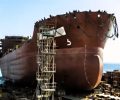
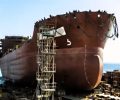
“ Shipowners need strategies and practical solutions to stay compliant and commercially competitive, while meeting regulatory and stakeholder requirements for decarbonizing vessel and fleet operations,” says Linda Sigrid Hammer, Principal Consultant, Environment Advisory in Maritime at DNV and lead author of Maritime Forecast to 2050. “Correctly assessing the technology, fuel and energy production/infrastructure landscape can enable owners to comply with prescribed or even more ambitious carbon reduction trajectories.”
Modelling the economics of ship fuel and design options
To assist shipowners in responding to the drive for decarbonization, DNV charts a practical path to stay under the carbon reduction trajectories. Maritime Forecast to 2050 presents an updated carbon risk-management framework (Figure 1) for finding the most cost-efficient Fuel Ready and fuel flexible choices for vessels.
The framework involves two steps. First, a techno-economic model, the FuelPath Model, investigates the financial performance of different fuel and energy-efficiency strategies open to a specified ship. Applying varying assumptions and scenarios, this step assists shipowners to identify design choices that will be resilient to future changes and perform well under a range of scenarios. The second step is a structured review of those design choices to identify crucial implications for ship design at both newbuilding and (possible) conversion stages.
“We have updated the framework specifically to enable detailed assessments of fuel flexible and Fuel Ready solutions. Given vessel lifetimes, planning for such solutions could ease the transition to lower- and zero-carbon fuel alternatives and minimize the risk of investing in stranded assets,” explains Hammer.
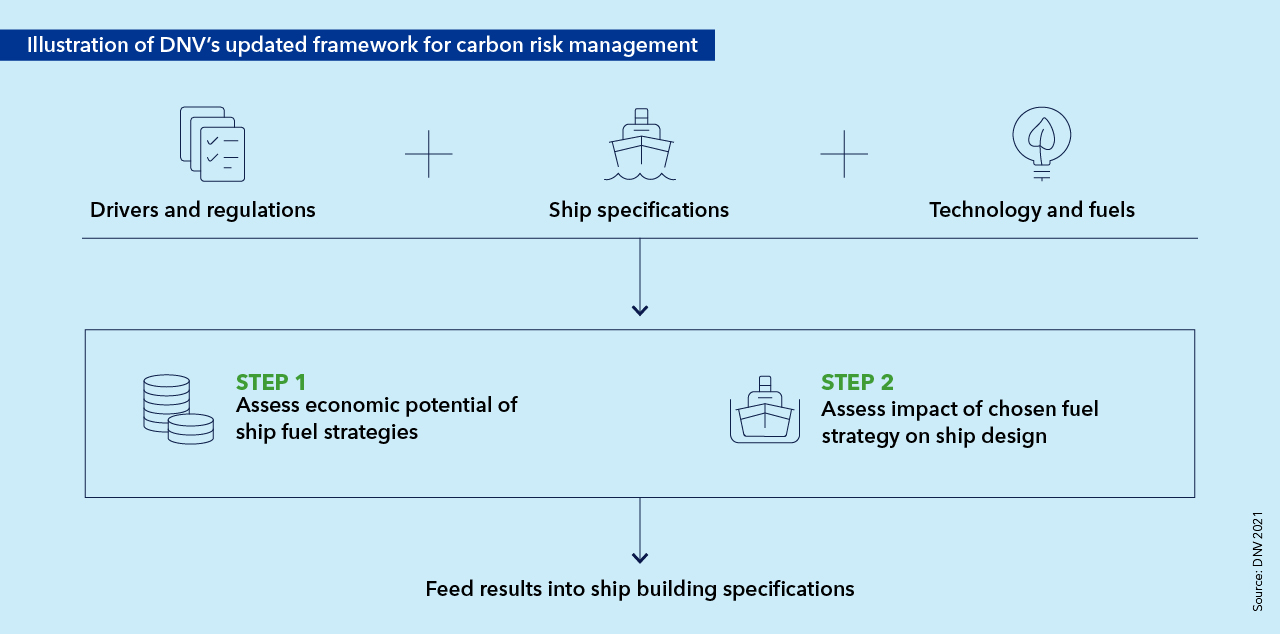
Figure 1: DNV’s latest approach to assist shipowners considering how to future-proof today’s newbuilds for tomorrow’s carbon emissions regulations and competitive pressures
Step one: Applying DNV’s FuelPath Model for ships
The FuelPath Model evaluates the economic performance of available design options related to fuel over the vessel’s lifetime. The performance is expressed as total cost of ownership, and other economic measures.
Four main parameter categories provide input for the FuelPath Model for a vessel: ship specifications and trade information; target trajectories for greenhouse gas (GHG) emission reductions; design options related to fuels; and fuel prices.
Maritime Forecast to 2050 demonstrates the first steps in just such an evaluation by varying selected parameters for a case study vessel – a newbuild Newcastlemax bulk carrier weighing 210,000 deadweight tonnes (dwt) and with a lifetime of 25 years (Table 1). The cruising range assumption allows the fuel-storage requirement to be estimated, assumes one bunkering per round trip, and allows for flexibility on some major coal trading routes.
“While the case study is for a newbuild bulk carrier, the evaluation approach can be adapted to any ship type and DNV is already supporting customers to achieve that,” adds Hammer.
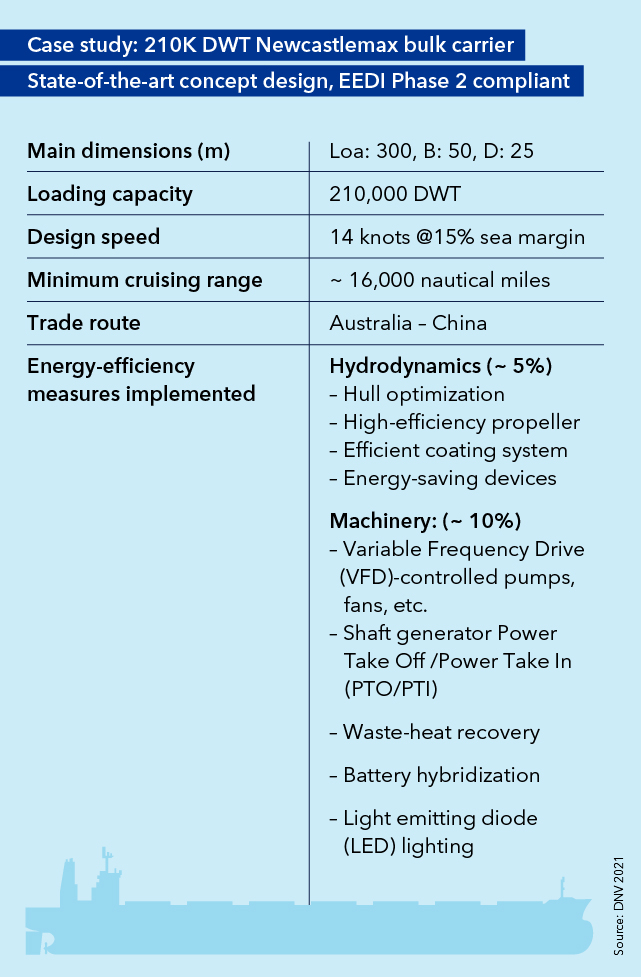
Table 1: Case study for 210,000 dwt Newcastlemax bulk carrier state-of-the-art concept design compliant with Energy Efficiency Design Index (EEDI) Phase 2
Evaluating fuel and design options in a bulk carrier case study
The Newcastlemax bulk carrier study applies a single GHG trajectory catering for cargo owners with ambitions to decarbonize emissions sooner than under the International Maritime Organization’s (IMO) current timetable. A slower trajectory involving minimum compliance was also considered but not modelled.
Full details of the chosen trajectory for the case study are in Maritime Forecast to 2050. Suffice it to say here that its eventual goal is full decarbonization of shipping emissions by 2040, with the most dramatic reduction coming after 2030.

Table 2: Design options related to fuel, investigated for a Newcastlemax bulk carrier. Fuel flexibility at newbuild and after conversion (if applicable) are shown for each design option.
The case study covers various fuels that can be used for each of seven rationally selected design options, either in a newbuild or after a possible future conversion (Table 2).
Fuel prices are a key determinant of the financial performance of design options related to fuel, but future fuel prices are hard to predict.
For simplicity, the case study’s fuel price assumptions (Table 3) reflect its choice of a single future scenario in which low-cost renewable electricity is available for producing electrofuels more cheaply than for biofuels.
The scenario envisages ammonia being the cheapest carbon-neutral fuel; shipowners serving those customers who are the most demanding when it comes to GHG reductions; and no carbon price –though the model does include scope to evaluate the economic impact on shipping of carbon pricing mechanisms that are being developed.
Maintaining constant fuel prices over the period modelled, the case study uses the FuelPath Model to see how the seven fuel-system design options described above compare with each another in the single scenario.
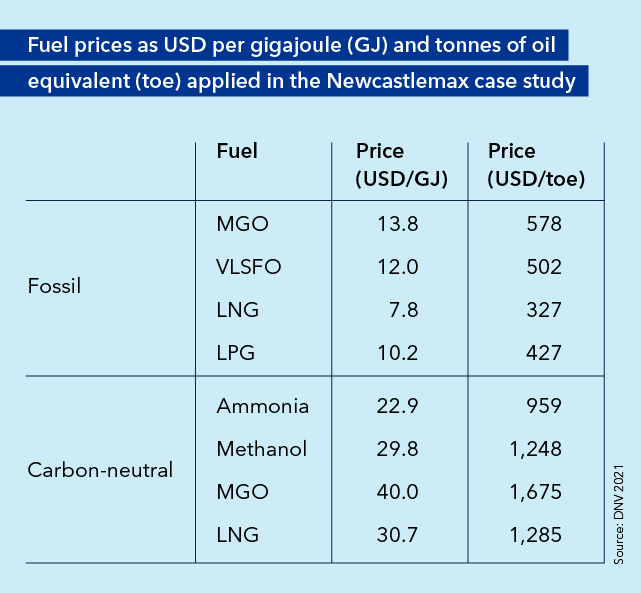
Table 3: Fuel prices as USD per gigajoule (GJ) and tonnes of oil equivalent (toe) applied in the Newcastlemax case study. The prices are given as future averages and reflect a scenario in which low-cost renewable electricity is available for the production of carbon-neutral electrofuels.
Key findings of the case study
Full details of the Newcastlemax bulk carrier case study findings are available in Maritime Forecast to 2050, but three key ones (Figure 2) for the chosen scenario and assumptions are:
- The conventional mono-fuel (MF) ship has the highest total discounted cost beyond 2030. It incurs the lowest capital expenditure (CAPEX), but the highest fuel expenditure (FuelEX) over its lifetime. This is because the study assumes a high price for carbon-neutral marine gas oil (MGO), which would be the only fuel option available for meeting the chosen GHG target trajectory.
- The ammonia-ready design solutions would have a higher CAPEX but comparatively lower FuelEX than the conventional option in their lifetimes.
- The two design options with lowest discounted costs are MF Fuel Ready (ammonia) and dual-fuel (DF) LNG Fuel Ready (ammonia). The study also identifies DF LPG Fuel Ready (ammonia) as a low-cost option but does not investigate it further.
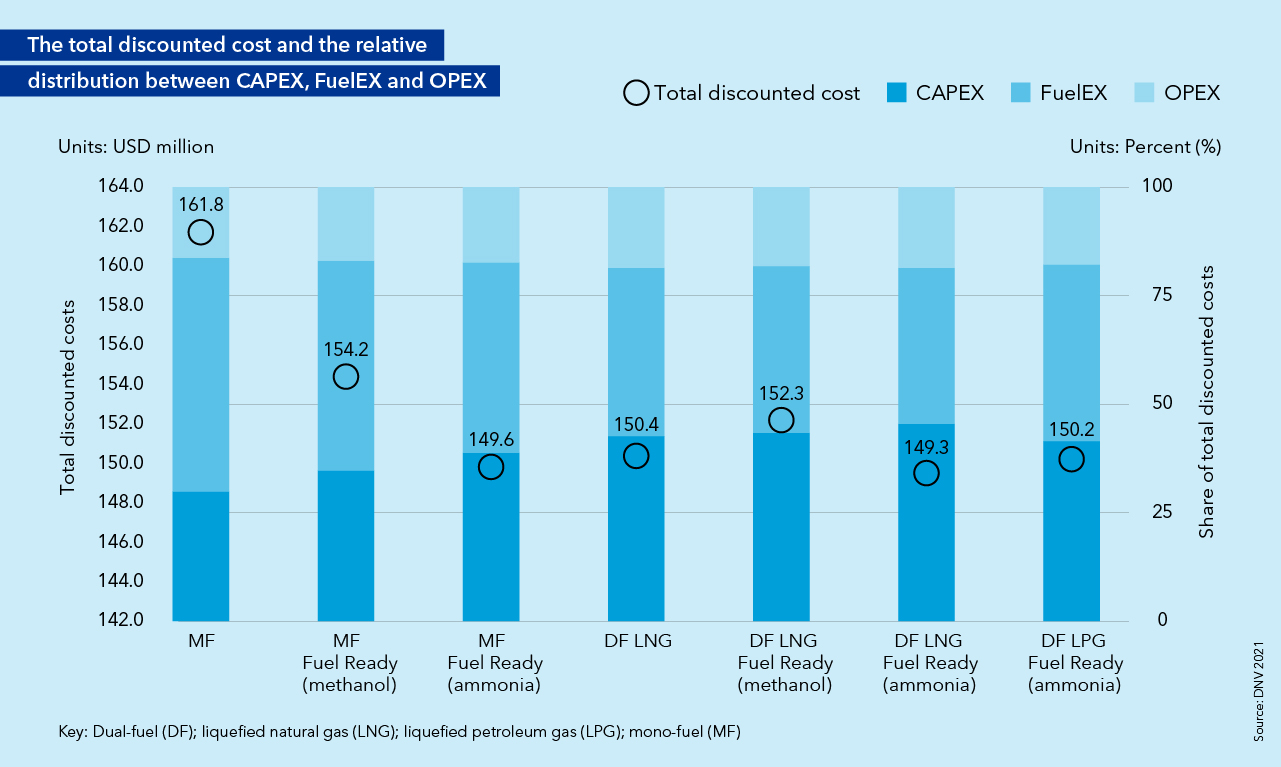
Figure 2: The total discounted costs of seven possible fuel-system designs evaluated by applying DNV’s FuelPath Model to a rapid decarbonization scenario for a 210,000 dwt Newcastlemax bulk carrier case study ship
These and other findings from the case study need interpreting in light of the narrowly defined assumptions applied in the case study, advises Hammer: “We stress that the results do not show that the ammonia-ready designs are necessarily the most robust choice (Figure 3), and the findings do not represent recommendations to shipowners. When used for actual newbuild decision support, multiple fuel and CO2 price scenarios and GHG trajectories should be tested to identify the most robust choices for the shipowner’s specific ship type and trade. However, the exercise firmly illustrates potential advantages of selecting designs underpinned by safety considerations and boosting a vessel’s fuel flexibility.”

Figure 3: Important factors influencing the business case for an ammonia-ready design, compared with a conventional vessel. In scenarios where these factors are changed, other designs may outperform the ammonia-ready designs.
Step two: Acting on the design implications of ship fuel strategies
Maritime Forecast to 2050 uses the case study findings as the basis for a structured review of design, which is forming step two of our carbon risk-management framework, for adapting 210,000 dwt newbuild Newcastlemax bulk carriers for possible future fuel transitions.
Two such vessels are considered: a conventional oil-fuelled ship, and a newbuild designed for dual-fuel LNG engines. DNV evaluates what is needed to ready both designs for transitioning to ammonia fuel in the future if required.
The review takes a systems engineering approach covering engineering considerations for fuel storage, engines and the integration of the fuel system in the ship design. The results from the engineering review can be fed into ship newbuild specifications. This may eliminate showstoppers and streamline a future conversion, hence reducing cost and time spent at a conversion yard.
For example, the table below shows action points that emerge from the review of what is needed to prepare the case study Newcastlemax bulk carrier for conversion from mono-fuel (conventional) to be ready to switch to ammonia as fuel.
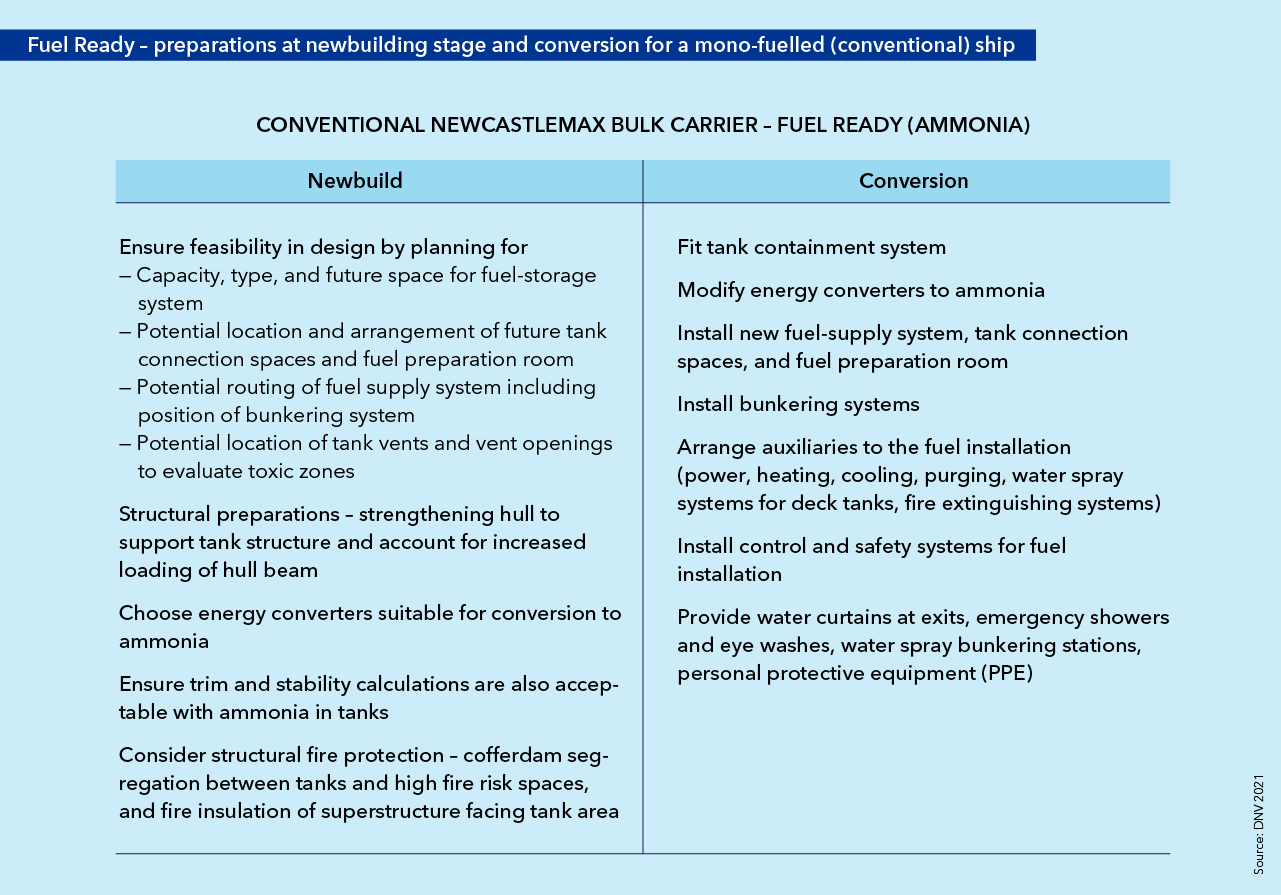
Table 4: Fuel Ready – preparations at newbuilding stage and conversion for a mono-fuelled (conventional) ship
Design review provides valuable input for newbuild specifications
Summing up, Hammer says: “The structured review of design maps out vital implications for newbuild specifications for a fuel-flexible strategy. The review is itself enabled by the guidance it receives from the techno-economic evaluation. Together these processes complete our two-step approach to managing carbon risk for shipowners who need practical solutions to comply with increasingly stricter decarbonization regulations and incentives.”
Source: DNV https://www.dnv.com/expert-story/maritime-impact/Evaluating-future-fuel-strategies-and-their-design-implications-for-newbuilds.html?utm_campaign=MA_21Q3_ART_Ind_359_MF%20Bulk%20Carrier%20Case&utm_medium=email&utm_source=Eloqua